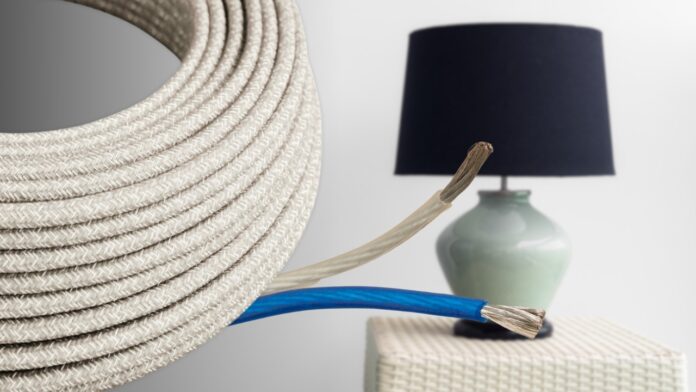When it comes to wiring a lamp, it can be easy to get confused about Which Lamp Wire Is Hot and which is not. In order to ensure that your lamp is safely wired, it’s important to understand the difference between these two wires and how to properly connect them.
In this blog post, we’ll provide a brief overview of how to wire a lamp and highlight the importance of using the correct wire for the job. Stay safe and have fun with your new lamp!
What Is Lamp Wire:
Lamp wire is a type of electrical wire that is designed for use with lamps and other lighting fixtures.
This type of wire is typically thinner than standard electrical wire and is often insulated with a material that is resistant to heat. Lamp wire is available in a variety of gauges, depending on the specific application.
What Are The Types Of Lamp Wire:
There are two main types of lamp wire:
1. Single Conductor:
This type of lamp wire has a single conductor or metalcore, that is surrounded by an insulating material. Single conductor lamp wire is typically used for low-voltage applications and is not suitable for use with high-voltage lamps.
2. Multi-Conductor:
Multi-conductor lamp wire has two or more conductors or metal cores, that is surrounded by an insulating material. This type of lamp wire is typically used for high-voltage applications and can be used with both low- and high-voltage lamps.
Which Type Of Material Used To Make Lamp Wire:
The most common type of material used to make lamp wire is copper. This type of wire is an excellent conductor of electricity and is also resistant to heat, making it ideal for use in lamps and other lighting fixtures.
Another type of material that can be used to make lamp wire is aluminum. While aluminum is not as good a conductor as copper, it is much lighter in weight and is less expensive.
please also check: Best Hardwired Led Shop Lights
Which Lamp Wire Is Hot:
The hot wire in a lamp is the wire that carries the electricity from the power source to the lamp. This wire is typically colored red or black and is usually the thicker of the two wires.
The other wire in a lamp is known as the neutral wire. This wire carries electricity from the lamp back to the power source. The neutral wire is typically colored white or green and is usually thinner than the hot wire.
How To Properly Connect Lamp Wires:
When wiring a lamp, it’s important to connect the wires correctly in order to prevent any accidents. The hot wire should be connected to the brass screw on the socket, while the neutral wire should be connected to the silver screw.
Once the wires are properly connected, screw in a light bulb and test the lamp to make sure it is working correctly. If everything looks good, you’re all set!
How To Choose Correct Wire For Lamp:
When choosing wire for your lamp, it’s important to select the correct gauge. The gauge is a measure of the thickness of the wire and is typically expressed as a number.
The higher the number, the thinner the wire. For most lamps, a 16-gauge wire is sufficient. However, if you are using a higher-wattage bulb, you may need to use a thicker wire.
You can typically find the correct gauge wire at your local hardware store or online.
Conclusion:
While it is important to be aware of which wire is hot in a lamp, it is also important to use caution. If you are not sure which wire is hot, do not touch it. Ask an adult for help if needed. And always remember to unplug your lamps when they are not in use.
For students who may be tasked with changing a light bulb, it is especially important to know which wire is hot so that you can avoid being shocked. Follow these simple tips and stay safe while changing light bulbs!
FAQs:
1. Which wire is hot in a typical lamp?
Answer: The hot wire in a lamp is typically the wire that is connected to the metal base of the lamp. This is usually the case because the metal base is connected to the power supply, and it is through this connection that electricity flows to the lightbulb.
2. What should you do if you touch the hot wire?
Answer: If you touch the hot wire of a lamp, you may be at risk of electrocution. If you are a student, please seek medical attention immediately. If you are a lamp user, unplug the lamp and contact an electrician to have the wiring repaired.
3. Are there any safety hazards to be aware of when working with lamps?
Answer: Firstly, always make sure that the cord of the lamp is not frayed or damaged in any way. If the cord is damaged, this can pose a serious shock hazard. Secondly, be careful when handling hot bulbs they can cause burns.
4. How can you avoid touching the hot wire in a lamp?
Answer: If you are a lamp user, be sure to unplug the lamp before replacing the light bulb. If you are a student, be sure to keep your hands away from the sockets while changing bulbs. Always model safe behavior for others by using insulated gloves or pliers.
5. What is the difference between the hot wire and cold wire?
Answer: The main difference between the hot wire and cold wire is that hot wire can be used to cut through materials while cold wire cannot. Hotwire is also known as a cutting wire because it is often used to cut the cardboard.




